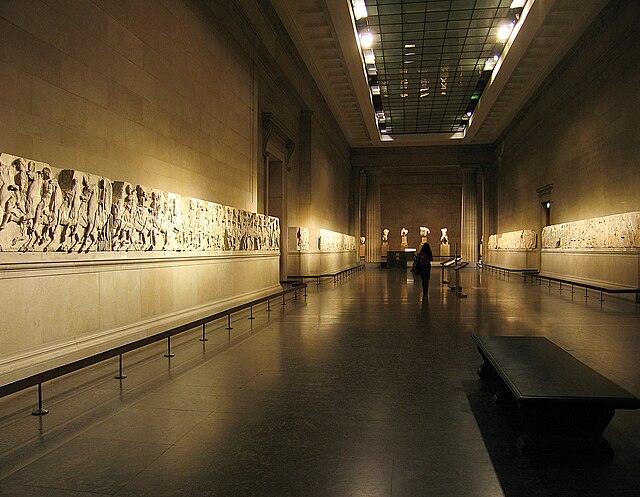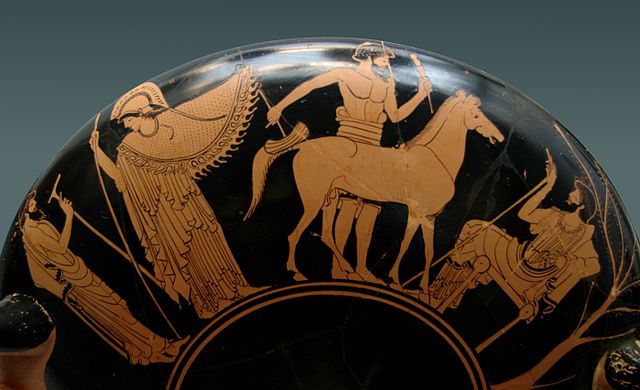The Elgin Marbles are a collection of Ancient Greek sculptures from the Parthenon and other structures from the Acropolis of Athens, removed from Ottoman Greece and shipped to Britain by agents of Thomas Bruce, 7th Earl of Elgin, and now held in the British Museum in London. The majority of the sculptures were created in the 5th century BC under the direction of sculptor and architect Phidias.
Elgin Marbles
Parthenon Selene Horse
Metope from the Elgin Marbles depicting a Centaur and a Lapith fighting
Statuary from the east pediment
The sculpture of ancient Greece is the main surviving type of fine ancient Greek art as, with the exception of painted ancient Greek pottery, almost no ancient Greek painting survives. Modern scholarship identifies three major stages in monumental sculpture in bronze and stone: the Archaic, Classical (480–323) and Hellenistic. At all periods there were great numbers of Greek terracotta figurines and small sculptures in metal and other materials.
Riders from the Parthenon Frieze, around 440 BC
Jockey of Artemision. Late Hellenistic bronze statue of a mounted jockey, National Archaeological Museum, Athens.
Natural marble
Athena in the workshop of a sculptor working on a marble horse, Attic red-figure kylix, 480 BC, Staatliche Antikensammlungen (Inv. 2650)








